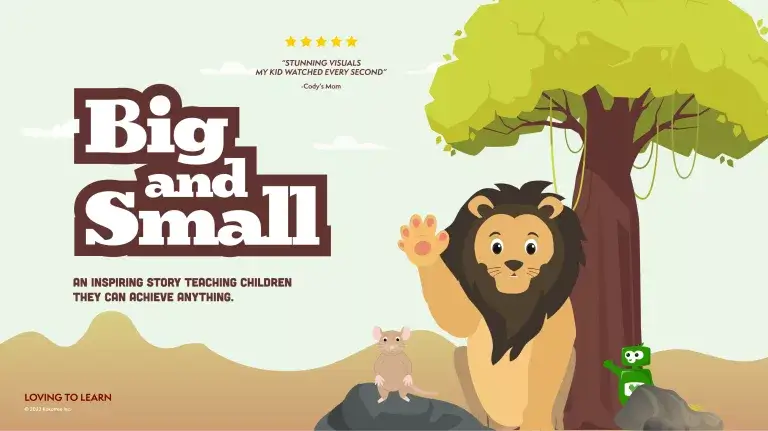

Join the Kokotree friends for an enlightening adventure in the jungle, where they learn the fascinating differences between big and small.
Understanding “big” and “small” concepts is crucial for preschoolers’ cognitive development and helps them learn preschool math. This blog post provides effective strategies to teach these concepts in a fun and engaging way.
In this engaging episode, the English teacher, Elizabeth, takes the children through the jungle. She points out various objects and animals, emphasizing their sizes. The children see big and small plants, rocks, trees, and animals, learning to use the words big and small to describe them. The highlight of their adventure is comparing a small baby deer with its much larger mother, illustrating the concept of size difference.
The episode also includes a story time segment where Elizabeth narrates a tale about Looka the Lion and Shoomy the Mouse. In this story, despite his initial skepticism about their size difference, Looka the Lion learns that even a small mouse like Shoomy can be a great help. This tale beautifully illustrates that no matter how big or small, everyone can make a significant impact.
The story teaches a valuable lesson about kindness, cooperation, and how appearances can be deceiving. It encourages children to appreciate everyone, regardless of their size, and highlights that even the smallest creatures can achieve great things.
The episode wraps up with Elizabeth summarizing the important lessons learned about the big and small things in the jungle. She encourages the children to be kind to others, reminding them that kindness can come back in unexpected ways.
Teaching big and small concepts to preschoolers can be a delightful experience. By incorporating these strategies into your teaching routine, you can help children grasp these essential concepts effectively. Remember to keep the learning process fun and interactive to maintain their interest and enthusiasm.




